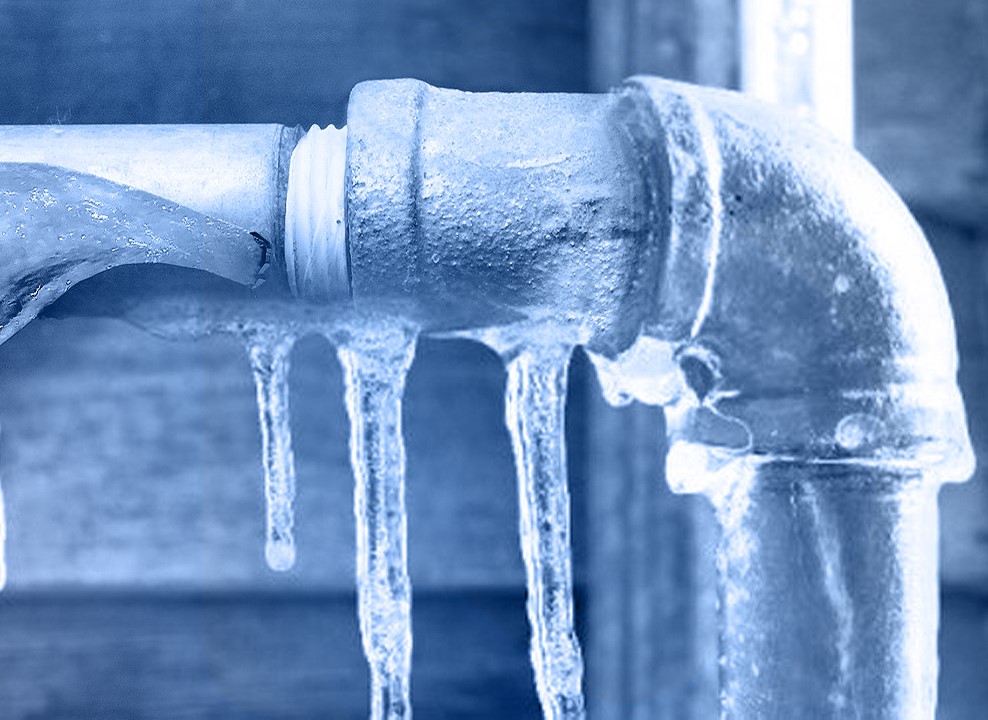Important Advice to Prevent Frozen Plumbing in Winter: Expert Insights
Important Advice to Prevent Frozen Plumbing in Winter: Expert Insights
Blog Article
What're your thoughts about Helpful Tips to Prevent Frozen Pipes this Winter?

Cold weather can damage your plumbing, especially by freezing pipes. Below's how to stop it from happening and what to do if it does.
Intro
As temperatures decrease, the danger of icy pipelines increases, potentially leading to expensive repair work and water damages. Recognizing exactly how to stop icy pipes is vital for house owners in cool environments.
Understanding Frozen Pipes
What triggers pipelines to ice up?
Pipes freeze when exposed to temperature levels listed below 32 ° F (0 ° C) for prolonged durations. As water inside the pipes freezes, it broadens, putting pressure on the pipeline walls and potentially triggering them to rupture.
Threats and damages
Frozen pipes can lead to supply of water disruptions, home damages, and expensive repairs. Burst pipelines can flood homes and create substantial structural damages.
Signs of Frozen Piping
Determining frozen pipes early can avoid them from breaking.
Exactly how to recognize frozen pipelines
Look for reduced water circulation from taps, uncommon smells or noises from pipelines, and visible frost on exposed pipelines.
Prevention Tips
Insulating at risk pipes
Wrap pipelines in insulation sleeves or utilize heat tape to protect them from freezing temperatures. Concentrate on pipelines in unheated or outside locations of the home.
Heating methods
Maintain indoor rooms sufficiently heated up, especially areas with plumbing. Open up closet doors to enable cozy air to circulate around pipelines under sinks.
Protecting Exterior Plumbing
Garden tubes and exterior faucets
Separate and drain pipes yard hoses prior to wintertime. Install frost-proof faucets or cover outside faucets with shielded caps.
What to Do If Your Pipes Freeze
Immediate activities to take
If you believe frozen pipelines, keep faucets open to soothe pressure as the ice thaws. Make use of a hairdryer or towels soaked in hot water to thaw pipelines gradually.
Long-Term Solutions
Structural changes
Consider rerouting pipes away from outside walls or unheated areas. Include added insulation to attic rooms, cellars, and crawl spaces.
Updating insulation
Invest in premium insulation for pipelines, attic rooms, and wall surfaces. Proper insulation helps maintain constant temperatures and decreases the danger of frozen pipes.
Conclusion
Avoiding frozen pipes needs positive steps and quick responses. By understanding the reasons, indications, and preventive measures, homeowners can shield their pipes during winter.
6 Proven Ways to Prevent Frozen Pipes and Protect Your Home
Disconnect and Drain Garden Hoses
Before winter arrives, start by disconnecting your garden hoses and draining any remaining water. Close the shut-off valves that supply outdoor hose bibs and leave the outdoor faucet open to allow any residual water to drain. For extra protection, consider using faucet covers throughout the colder months. It’s also important to drain water from any sprinkler supply lines following the manufacturer’s directions.
Insulate Exposed Pipes
Insulating your pipes is an effective way to prevent freezing. Pipe insulation is readily available at home improvement stores and is relatively inexpensive. Pay close attention to pipes in unheated areas such as the attic, basement, crawl spaces, or garage. Apply foam insulation generously to create a buffer against the cold. You can also wrap your pipes in heat tape or thermostat-controlled heat cables for added warmth.
Seal Air Leaks
Inspect your home for any cracks or openings that could let in cold air. Seal any holes around the piping in interior or exterior walls, as well as the sill plates where your home rests on its foundation. Additionally, make sure to keep your garage door closed unless you’re entering or exiting. Leaving it open creates a significant air leak that can lead to frozen pipes.
Allow Warm Air Circulation
During cold snaps, it’s essential to allow warm air to circulate evenly throughout your home. Leave interior doors ajar to promote better airflow. Open kitchen and bathroom cabinets to help distribute heat consistently around the rooms. If you have small children or pets, be sure to remove any household chemicals or potentially harmful cleaners from open cabinets for safety.
Let Faucets Drip
A small trickle of water can make a big difference in preventing ice formation inside your pipes. When temperatures drop significantly, start a drip of water from all faucets served by exposed pipes. This continuous flow helps prevent the water from freezing. Additionally, running a few faucets slightly can relieve pressure inside the pipes, reducing the chances of a rupture if the water inside does freeze.
https://choateshvac.com/6-proven-ways-to-prevent-frozen-pipes-and-protect-your-home/

We had been made aware of that report on How to prepare your home plumbing for winter weather through a pal on a different domain. Sharing is nice. You won't know, you could be helping someone out. Thanks for going through it.
Call Today Report this page